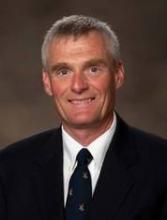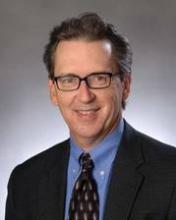Performing 50 colonoscopies and 35 upper endoscopies is adequate training.
These guidelines are minimum numbers that a residency graduate candidate has to complete in order to enter the certification process.
We have minimums established in more than a dozen case categories, and residents have to provide documentation of minimum experience in each of these different areas, including endoscopy. Defined category minimums were established to ensure that a residency graduate would have a balanced operative experience in each of the essential areas of general surgery. Completion of these defined category minimums alone was not meant to indicate competence to perform the procedures. Evaluation of a resident graduate’s ability to perform these procedures has traditionally been provided by the teaching faculty and program director after direct observation of each resident.
The American Board of Surgery (ABS) has increased the minimum number to 50 colonoscopies and 35 upper GI endoscopies (from 25 and 25, respectively). They’ve been increased because the ABS acknowledges that general surgeons are performing an increasing number of endoscopic procedures in the United States, especially in rural areas. There is a need to make sure that patients in underserved areas can get access to both diagnostic and therapeutic endoscopic services.
Some of the gastrointestinal societies in the United States recently questioned whether these were adequate numbers to provide experience for surgery residents. After some discussion back and forth, the ABS, the major gastrointestinal societies, and the surgical endoscopy societies (including the Society of American Gastrointestinal and Endoscopic Surgeons) have established a cooperative venture and are working to establish new, comprehensive guidelines for objectively evaluating all trainees in performing endoscopic procedures. One of the reasons for doing this is that, for many surgery residents, endoscopy is taught by GI specialists. So it’s thought that if we can come to agreement and create useful guidelines for everybody, it will be a much more constructive way to train clinicians going forward.
The hope is that a new flexible endoscopy training program with objective evaluation will emerge from this venture, replacing an emphasis by some clinicians on the number of cases performed as being the key metric. The problem with emphasizing number of cases performed as a metric is that some people can achieve competence by performing a much smaller number of cases than can some of their peers. Some people are fast learners with procedures, whereas others require more time. A person with a lot of experience doing many procedures may not take as long to develop experience and competence in colonoscopy and upper endoscopy as might someone who has not done a vast array of procedures.
The ABS, the GI societies, and the surgical endoscopy societies agree that we need a better method to evaluate competence in performing endoscopic procedures. Through our cooperative venture, we’re developing a comprehensive program that uses objective measures such as simulation and different kinds of models to see how adept a person is at endoscopic procedures. Ultimately, it comes down to the success rate in performing certain aspects of the procedure, such as intubation of the cecum or the ability to detect and remove different types of adenomatous polyps – outcomes of that nature.
The mutual guidelines are a work in progress. They’re mature at this point, but not quite ready for implementation. I characterize them as a well-prescribed curriculum and evaluation tool for trainees in endoscopy. From the ABS’s standpoint, we would love to see the guidelines completed and distributed within the next 6-12 months so that we can start to apply some of these principles of evaluation to our trainees. If this curriculum – with objective evaluation of procedural skills – is successful, it could serve as a model for the development of similar programs for other procedures taught during residency or fellowship.
For now, the ABS stands by its current guidelines that require all surgery residents to perform at least 50 colonoscopies and 35 upper endoscopies.
Dr. Cogbill is vice chair of the American Board of Surgery and practices in the department of surgery at the Gundersen Lutheran Health System in La Crosse, Wis.
The number of cases performed matters less than whether quality targets can be achieved.
I’m opposed to generalizations about gastroenterologists or surgeons who do endoscopy because they are unfair to individual endoscopists.
There’s evidence of much within-specialty variation in the quality of endoscopic procedures, particularly colonoscopy. It’s not unusual to see the so called "adenoma detection rate" for colonoscopy vary up to 10-fold among members of the same gastroenterology practice group. We don’t see studies on adenoma detection from surgery groups, but in a study I led that examined the appearance of interval cancers (that is, cancers that develop after one colonoscopy and before the next), there were some general surgeons whose patients never had interval cancers and others who had them more than expected (Gastroenterology 1997;112:17-23). The same within-specialty variation almost certainly applies to surgeons doing colonoscopy.



